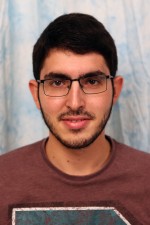
Carnegie Mellon University
1:30 pm to 2:30 pm
GHC 6501
In this thesis, we explore sampling-based trajectory optimization applied to search for objects of interest in constrained environments (e.g., a UAV searching for a target in the presence of obstacles). We consider two search scenarios: in the first scenario, accurate prior information distribution of the possible locations of the objects of interest is available, thus we cover this information distribution until we find the target. In the second scenario, no or crude prior information distribution exists about the locations of the objects of interest, thus we actively search for those objects by updating the information distribution.
For the first search scenario we explore ergodic coverage. Ergodic coverage is an approach for trajectory planning in which a robot is directed such that the percentage of time spent in a region is in proportion to the probability of locating targets in that region. We extend the ergodic coverage algorithm to robots operating in constrained environments and present a formulation that can capture sensor footprint and avoid obstacles in the domain. We demonstrate through simulation that our formulation easily extends to coordination of multiple robots equipped with different sensing capabilities to perform ergodic coverage of a domain.
In the second part of the thesis, we consider the second search scenario. Specifically, we investigate palpation-based tumor search and develop an approach that guides robots to automatically localize and find the shapes of tumors and other stiff inclusions present in anatomies. Our approach uses Gaussian processes to model the stiffness distribution, and active learning integrated with trajectory optimization to direct the palpation path of the robot. Our approach provides the flexibility to avoid obstacles in the robot’s path, incorporate uncertainties in robot position and sensor measurements, and include prior information about location of stiff inclusions while respecting the robot kinematic constraints. The proposed framework is evaluated via simulation and experimentation on three different robot platforms: 6-DoF industrial arm, da Vinci Research Kit (dVRK), and the Insertable Robotic Effector Platform (IREP). Results show that our approach can accurately estimate the locations and boundaries of the stiff inclusions while reducing exploration time.
Committee:
Howie Choset, Co-chair
Matthew Travers, Co-chair
Michael Kaess
Arun Srivatsan Rangaprasad
